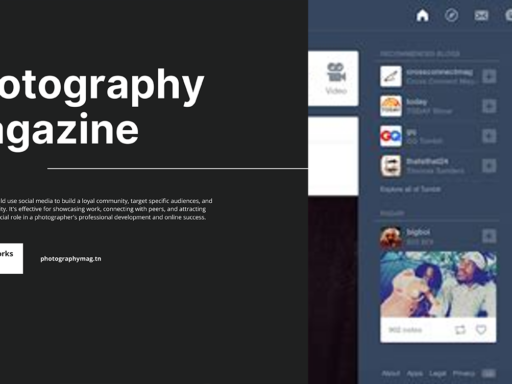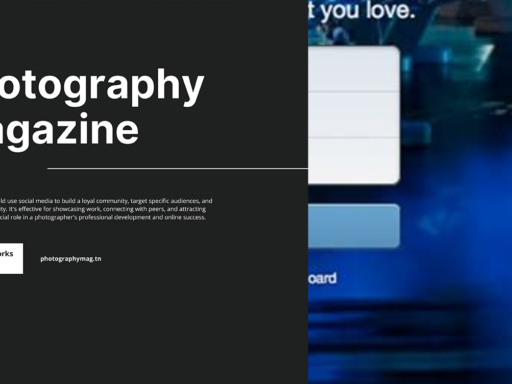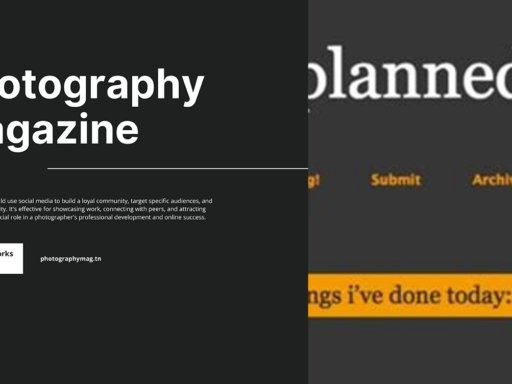Was Tumblr Really the King of the Internet in 2014?
Ah, 2014—a magical, whimsical year when teenagers roamed the vast fields of the internet, donning oversized flannel shirts, sipping on artisanal coffee, and curating their ideal lives through the enchanting world of Tumblr. For many, it wasn’t just a platform; it was a full-blown lifestyle. As we dive into this nostalgic rabbit hole, let’s explore the reasons behind Tumblr’s immense popularity in that quirky year.
✨ A Platform for the Creative Souls
In 2014, Tumblr was the playground for all things creative and out-of-the-box. It was a platform where art, photography, poetry, and even snarky memes coexisted, reflecting the quirky interests of its community. Users could showcase their favorite aesthetics, share their artwork, or even vent about their existential crises—all in one place!
Why was it so popular? Well, for starters, users loved the freedom of self-expression that Tumblr facilitated. Unlike other social media platforms that began to prioritize picture-perfect posts, Tumblr embraced the chaotic and the weird. If you wanted to share a gif of a cat wearing sunglasses, or an obscure post about an indie band no one’s heard of, you were in good company.
🎨 The Aesthetics of 2014
Let’s talk about aesthetics—the keyword that defines so much of what Tumblr stood for in 2014. The era of “indie-alternative” swept through the platform like a warm breeze on a chilly autumn day. Users flocked to discover and create visual masterpieces that sparked joy and inspiration.
Here’s what one could frequently see:
- Grunge and Hipster Vibes: Think vintage cameras, ironic slogans, and endless cups of coffee.
- Fictional Worlds: Fan art and fanfiction for shows like “Doctor Who” and “Supernatural” became cult classics.
- Quirky GIFs: The GIF culture exploded, expressing everything from humorous moments to raw emotions.
This unique blend of visuals helped make Tumblr a haven for those who wanted to escape the mundane and embrace the eccentric. If Instagram was for carefully curated aesthetic feeds, Tumblr was for the beautifully chaotic, where the awkwardness of adolescence was put on display without a hint of shame.
🌟 Community and Connection
Tumblr wasn’t just about sharing cool stuff; it was about creating communities and forging relationships. Users quickly discovered the power of tags, which allowed them to find like-minded souls. Whether you were desperately seeking the next hot indie band, or trying to find people who loved the same obscure movie as you, Tumblr had a space for you.
Key communities that flourished in 2014:
- Fandoms: From “Sherlock” to the “Hunger Games,” fandoms exploded with creativity, creating intricate role-playing games, fan edits, and discussion threads.
- Social Justice: Alongside its aesthetics, Tumblr also became a platform for activism, where discussions focused on pressing topics like gender identity, race, and mental health bloomed.
- Queer Visibility: By giving voice to marginalized communities, Tumblr fostered an inclusive atmosphere, uniting people under shared experiences and identities.
Needless to say, it became a hub for connection and an escape from the realities of teenage life!
📅 The Era of the Aesthetic and the Selfie
These were the times when a “cute selfie” wasn’t complete without an artsy filter—or *ten*. Tumblr’s photo reblogging feature meant that if you found that perfect shot of someone sitting on the edge of the world, you could easily share it with sympathetic souls who felt the same sense of OH-MY-GOD-I-WANT-TO-VISIT-THAT-PLACE.
Users curated their blogs with a combination of reblogged art, heartfelt quotes, and candid moments, resulting in a collection that screamed, “LOOK AT HOW EDGY I AM!” What better way to express your deep thoughts and feelings than with a side of aesthetic visuals? Seriously though, it was like journaling, but with chia seeds and a vintage filter on top.
🚀 Trending and Tumbling
Let’s face it—trends have always been part of Teen Culture, but in 2014, they had their own magical spin, taking Instagram’s polished aesthetic and flipping it on its head. Trending topics like “#NotLikeOtherGirls” and “#SadGirls” were everywhere on the platform, sparking discussions that were both uplifting and cringe-worthy. We’ve all seen the posts where someone claims, “I’m just a sad child with an old soul” paired with a moody black-and-white aesthetic. Schmidt’s Law of Adolescent Drama? Pretty much!
But beneath the layers of angst lay a thread of camaraderie that can’t be overlooked. Tumblr users became so good at cultivating meme culture that it practically birthed new catchphrases and inside jokes that chilled on the internet like pop-culture’s coolest gang.
💫 In the Hierarchy of Social Media Platforms
By 2014, Tumblr had cemented its status as a social media powerhouse. But when you think about it, it wasn’t just about being a social media network; it was more like a “digital diary” where teenage angst, creativity, and community converged. At the time, it was the perfect blend of social networking and personal expression.
While everyone else was posting sparkling pictures of their brunch, Tumblr users were delving deep into obscure fandoms or sharing quotes that were downright *real*. “Why have two-dimensional friendships on Facebook when you can bond over how tragic your favorite character’s arc was?” That was Tumblr’s motto, and boy did it resonate!
🏆 Lasting Impact and Legacy
Fast forward to today, and you might wonder about Tumblr’s role in the grander scheme of the internet. Despite facing stiff competition from platforms like Instagram and TikTok, Tumblr’s cultural significance lives on. Platforms frequently cannibalize each other’s trends, creating a melting pot where memes and aesthetics travel but often trace back to their Tumblr roots.
In fact, many trends we currently see, notably in art and meme culture, can link back to this 2014 hub. The internet is effectively Tumblr’s creative child, and we’re all still dealing with the creative outbursts that stemmed from that unique atmosphere.
🔚 To Conclude…
In absolute candor, yes, Tumblr was undoubtedly popular in 2014. The platform encapsulated a pivotal time in digital history that celebrates individuality, creativity, and the innate desire of humans to connect over shared interests and quirks. While other platforms drift towards polished and sanitized content, Tumblr remains a vivid tapestry of what once was—a kaleidoscope full of everything weird, wonderful, and beautifully relatable.
So, as we reflect on those magnetic years, let’s raise our artisanal coffee cups to the vulnerability, the artistry, and the surreal nature of being a Tumblr user in 2014. After all, nobody could quite understand the heart-wrenching yet comically detached view of life like the inhabitants of that quirky little platform.




